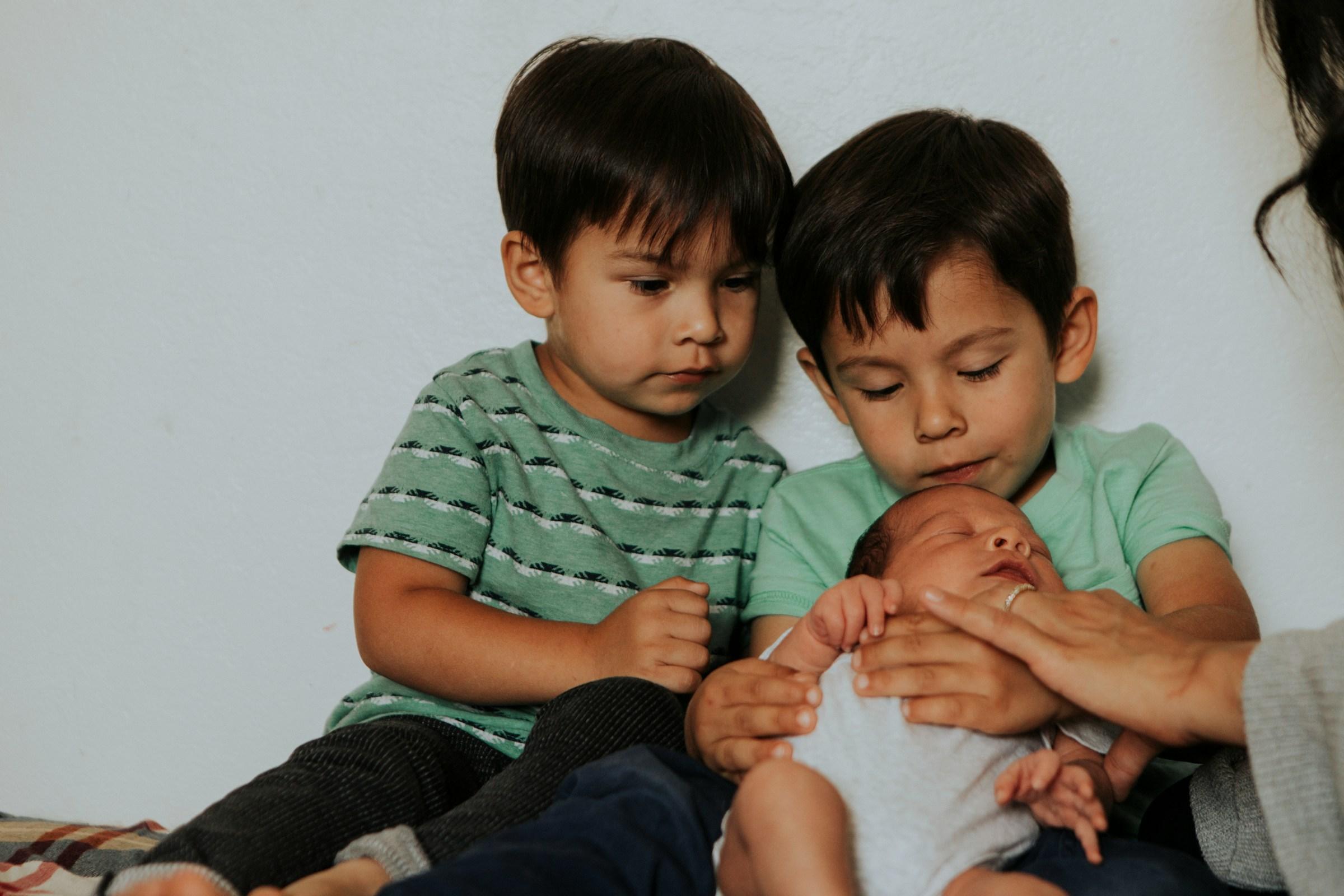The first time a toddler looks you straight in the eye and says “no,” it feels like a tiny earthquake in the living room. The same child who once melted peacefully into your arms now tests bedtime, snack time, and every rule you thought was quietly agreed upon. In that moment, it is not just a child who is changing. Your parenting style is changing too, whether you planned for it or not.
Parenting rarely shifts in one big dramatic moment. It usually moves in the small adjustments you make to your home, your schedule, and your tone. A gate comes off a doorway. A low shelf becomes a shared book nook instead of a cluttered toy basket. The dining table, once a place where you fed a baby on your lap, slowly becomes a space where you ask real questions and hear answers you were not expecting. The system of your home evolves as your child grows, and your style as a parent evolves alongside it.
In the early years, parenting is built on containment and routine. You baby proof sockets, push fragile things to higher shelves, and move sharp corners out of reach. Your main job is to keep a very small person safe in a world that is not designed for them yet. Your voice is firm but simple. You say “no” a lot. You carry your child to where they should be. You create a soft perimeter of safety with furniture, gates, and repetitive rituals that hold the day together.
Then boundaries start to look different. Once your child can walk, talk, and express a clear preference for the blue cup instead of the green one, parenting shifts from pure protection to negotiation. The home changes too. Maybe the coffee table becomes a craft station. Maybe the kitchen stool appears so little hands can reach the sink. You still care about safety, but you also care about participation. You want this child to know they belong in the space, not just live inside it.
This is usually when the first real battles start. A toddler stands in the hallway refusing to put on shoes. A preschooler throws themselves onto the floor because you poured the cereal “wrong.” Underneath the noise, something important is happening. Your child has figured out that rules are not just a given. They can be tested. They can be questioned. They can be pushed. The way you respond to this early push shapes the style you lean on in the years ahead.
Some parents tighten control in this phase. They add more rules, more warnings, more consequences. They lean on the idea that “because I said so” should be enough. The home feels orderly, but often tense. Others swing the other way and soften every line. They say yes to extra screen time, extra cookies, a later bedtime, because it feels easier than another argument at the end of a long day. The home feels warm, but slightly unanchored. Most parents live somewhere in the middle, adjusting day by day, trying to find a tone that feels firm but kind.
As children move into early school age, the boundary testing changes shape. It is less screaming on the floor and more subtle experiments. A homework sheet is “forgotten” at school. A story about who started the argument with a sibling shifts from one version to another. Your child is no longer just testing the rule. They are testing you as a person. Are you paying attention. Are you consistent. Do you mean what you say.
At this stage, parenting styles that once relied on simple commands start to feel clumsy. You cannot just carry a seven year old to bed the way you did with a toddler. You cannot physically contain everything they do. The living room becomes a place for family meetings instead of just play. The kitchen counter becomes a planning station for lunch boxes, art projects, and school forms. Boundaries move from physical objects like stair gates into invisible agreements like screen time limits and chore expectations.
This is often the phase where parents discover how important it is to explain the why behind their rules. Children this age are old enough to understand that you care about sleep because their brain needs it, and that you limit sugar because it affects their mood. They are old enough to help pack their own school bag, to wipe down the dining table after dinner, to feed the cat. The home becomes a shared system rather than a hotel run by adults. When you invite them into that system, your style shifts from manager to guide.
Then the preteen years arrive, and the boundaries stretch again. The questions become sharper. Why this curfew. Why this rule about phones in bedrooms. Why can a friend do something they cannot. Your child is now collecting data from outside your home. Their sense of what is normal is shaped not just by family, but by classmates, teachers, and what they see online. The home stops being the only world they know and starts being one world among many.
In this stage, you may notice that your parenting style around control no longer delivers the same results. A strict rule on phones might be necessary, but a strict rule without conversation can turn your kitchen into a cold war zone. A completely relaxed approach can make a child feel unmoored, as if no one is steady enough to hold a line when it matters. Your style has to become more relational. You still hold boundaries, but you also invite your child into the thinking behind them. The family sofa might host fewer cartoon marathons and more half serious, half awkward conversations about friendships, feelings, and mistakes.
Your home design can support this new phase of parenting in subtle ways. A shared charging station near the front door makes it normal to park devices at night, so the rule is carried by the space, not just by you. A corner of the living room with a comfortable chair and a lamp becomes a natural place for one to one chats before bed. A corkboard or whiteboard in the kitchen lets everyone see the week at a glance, so consequences and privileges feel less random and more tied to shared agreements.
By the time your child reaches the teenage years, boundary pushing is almost a language of its own. They may question family values, try on new identities, or experiment with style, music, and social circles that do not look like your own. It can feel unsettling to watch your child become someone you have never met before, while still needing you for rides, money, and emotional support. Your style has to stretch again, this time in the direction of respect and trust.
In this phase, sustainable parenting often means treating your teenager less like a project and more like a person you live with. You still set non negotiables around safety, respect, and legal limits. You still care who they are with and what they are doing. But you also accept that their room might look different from the rest of the house. You accept that their music may not suit your Sunday mood. The home becomes a container big enough for more than one taste.
Here, the phrase how parenting styles shift as children grow is not just a psychological idea. It plays out in small, practical choices. You knock before entering their room. You move from ordering to inviting when you ask for help with dinner. You schedule some family rituals that are gentle but consistent, like a shared weekend breakfast or a weekly movie night, and you protect those pockets of connection even as schedules become chaotic. The rules of the home become less about control and more about mutual respect.
At every stage, children push boundaries because growth naturally presses against old limits. It is not always defiance for the sake of chaos. A toddler who insists on doing it “by myself” is practicing independence. A primary school child who questions your rule is testing their own reasoning. A teenager who wants more freedom is learning to carry responsibility. When you remember that, your style shifts from seeing boundary pushing as an attack to seeing it as a signal. Something in the system needs an update.
Sometimes that update is structural. Maybe your child is ready to bike to school instead of being driven. You respond by revisiting routes, helmets, and traffic rules, not by dismissing the request out of hand. Other times, the update is emotional. Your child might not need you to fix their social problem, just to listen without instantly taking over. The living room becomes a listening space instead of a lecture hall. The kitchen becomes a place for quiet conversation after a rough day, not an interrogation under bright lights.
Of course, there are moments when boundaries exist simply to keep your child safe, even if they dislike them. You still lock cleaning products away from curious toddlers. You still insist on seat belts, consent, and basic kindness. Adaptive parenting does not mean saying yes to everything. It means knowing which boundaries can flex and which must stay solid, then communicating that distinction with clarity and warmth.
The heart of this evolution is simple, even if it does not feel simple while you are in it. When children are small, parenting leans heavily on structure and environment. As they grow, parenting leans more on relationship and conversation. The home evolves from a padded play pen into a workshop for values, choices, and repair after conflict. The same walls that once echoed with lullabies might later hold late night talks about exams, heartbreak, or big life decisions. If you look back over the years, you may notice that your parenting style mirrors the way your home has changed. Perhaps your living room is less perfect, but more lived in. Perhaps the dining table has a permanent pencil mark from a school project. Perhaps your hallway has graduated from stroller parking to sports gear and oversized shoes. These traces are not failures of control. They are signs of a family that has shifted and stretched together.
In the end, parenting in an intentional home is less about choosing one fixed label such as strict or gentle, and more about learning to listen to what each season asks of you. There are months where everyone needs firmer rhythms so mornings do not fray. There are months where what your child needs most is softness and curiosity.Styles of parenting, like the rooms we live in, are allowed to move. As children grow and push against old boundaries, the most sustainable response is not to harden or collapse, but to redesign. A little more trust here. A clearer rule there. A new ritual at the kitchen table. A softer landing place on the sofa.
What you are building, over time, is not a perfect system, but a living one. One where boundaries protect without suffocating, where independence grows without abandonment, and where everyone, parent and child, can keep learning what it means to live together in a home that breathes with them.














